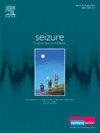改良阿特金斯饮食与低血糖指数治疗对儿童耐药癫痫的影响:一项系统回顾和荟萃分析
IF 2.8
3区 医学
Q2 CLINICAL NEUROLOGY
引用次数: 0
摘要
改良阿特金斯饮食(MAD)和低血糖指数治疗(LGIT)都被认为比生酮饮食限制更少,对耐药癫痫(DRE)儿童有效。几项随机对照试验(rct)比较了这两种饮食。方法:纳入所有直接比较MAD和LGIT治疗DRE的随机对照试验。我们汇总了两组中癫痫发作频率降低百分比、癫痫发作自由受试者人数、癫痫发作频率降低≥90%和≥50%、认知、行为和不良反应的变化。结果:纳入3项随机对照试验,共265名受试者。在MAD组和LGIT组之间,实现癫痫发作自由、干预后癫痫发作频率减少≥50%和≥90%的儿童人数以及每周癫痫发作频率减少百分比的合并估计是相当的(RR: 1.24 [95% CI: 0.71-2.16];I²= 0%,p = 0.45, RR: 0.86 [95% CI: 0.57-1.29];我²= 62%,p = 0.45, RR: 1.35(95%置信区间:0.82—-2.21);²= 5%,p = 0.24, MD: 6.5(95%置信区间CI: 13.8 - 0.6);I²= 45%,p = 0.07)。两组之间表现出认知改善和行为合并症改变的儿童数量也具有可比性(p = 0.60和0.21)。然而,MAD组不良反应发生率较高(RR: 1.37 [95% CI: 1.12-1.68];I²= 42%,p = 0.002),尽管两组中出现严重不良反应的参与者数量相似(RR: 1.68 [95% CI: 0.71-3.99];I²=0 %,p = 0.24)。LGIT组对分配干预的依从率在数值上更高(p = 0.73)。结论:MAD与LGIT的疗效相当,但LGIT的不良反应较少。本文章由计算机程序翻译,如有差异,请以英文原文为准。
Modified Atkins Diet versus low glycemic index treatment in children with drug-resistant epilepsy: A systematic review and meta-analysis
Introduction
Both the Modified Atkins Diet (MAD) and Low Glycemic Index Treatment(LGIT) are considered less restrictive than the ketogenic diet and effective in children with drug-resistant epilepsy(DRE). Several randomized controlled trials (RCTs) have compared these two diets.
Methods
All RCTs directly comparing MAD and LGIT for DRE were included in the review. We pooled estimates for percentage seizure frequency reduction, the number of participants with seizure freedom, ≥90 % and ≥50 % reduction in seizure frequency, as well as changes in cognition, behavior, and adverse effects in both groups.
Results
Three RCTs with 265 participants were included. The pooled estimates for the number of children achieving seizure freedom, ≥50 %, and ≥90 % reduction in seizure frequency post-intervention, as well as weekly percentage seizure frequency reduction, were comparable between the MAD and LGIT groups(RR: 1.24 [95 % CI: 0.71–2.16]; I²=0 %, p = 0.45, RR: 0.86 [95 % CI: 0.57–1.29]; I²=62 %, p = 0.45, RR: 1.35 [95 % CI: 0.82–2.21]; I²=5 %, p = 0.24, and MD:6.5 [95 % CI:13.8 to 0.6]; I²=45 %, p = 0.07). The number of children showing improvement in cognition and changes in behavioral comorbidities were also comparable between the groups(p = 0.60 and 0.21). However, the MAD group had a higher incidence of adverse effects(RR: 1.37 [95 % CI: 1.12–1.68]; I²=42 %, p = 0.002), though the number of participants experiencing serious adverse effects was similar in both groups(RR: 1.68 [95 % CI: 0.71–3.99]; I²=0 %, p = 0.24). Adherence rates to the allocated intervention were numerically higher in the LGIT group(p = 0.73).
Conclusion
Both MAD and LGIT are comparable in efficacy, but LGIT is associated with fewer adverse effects.
求助全文
通过发布文献求助,成功后即可免费获取论文全文。
去求助
来源期刊

Seizure-European Journal of Epilepsy
医学-临床神经学
CiteScore
5.60
自引率
6.70%
发文量
231
审稿时长
34 days
期刊介绍:
Seizure - European Journal of Epilepsy is an international journal owned by Epilepsy Action (the largest member led epilepsy organisation in the UK). It provides a forum for papers on all topics related to epilepsy and seizure disorders.
 求助内容:
求助内容: 应助结果提醒方式:
应助结果提醒方式:


